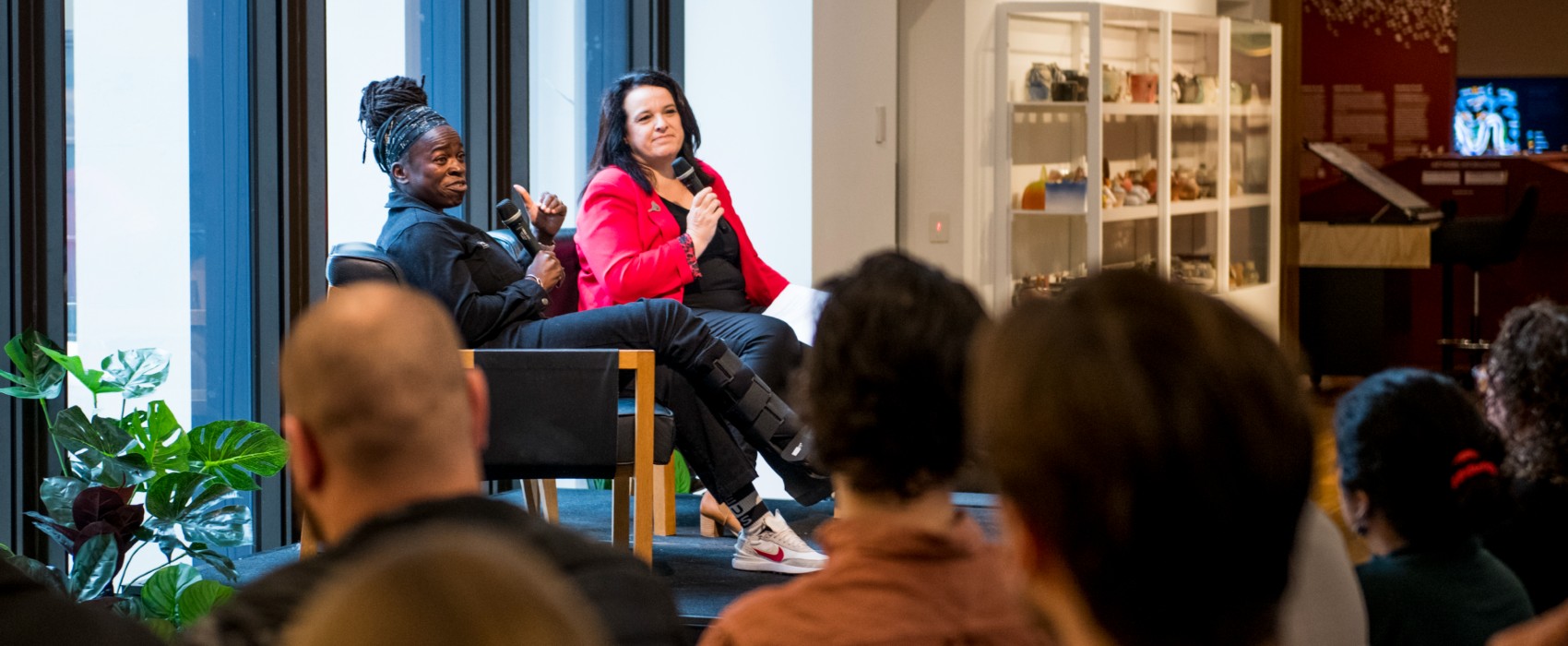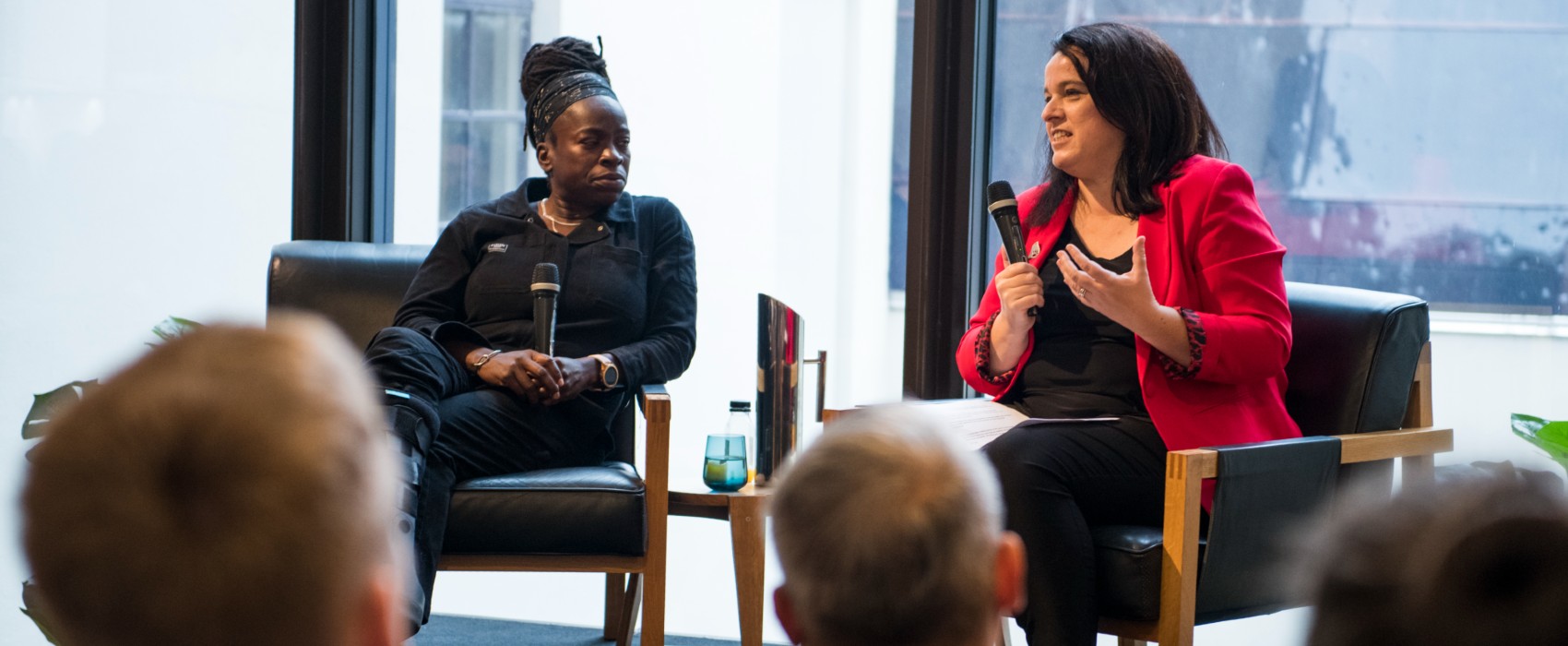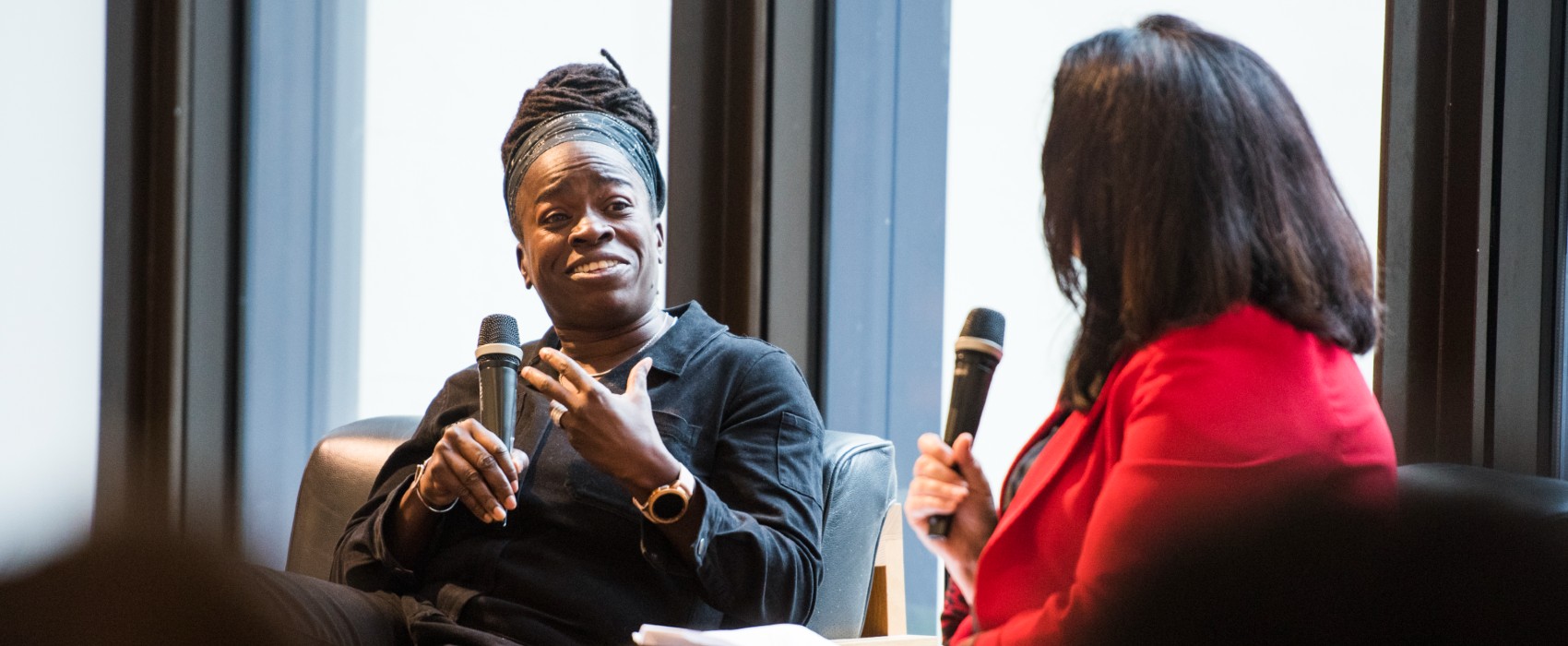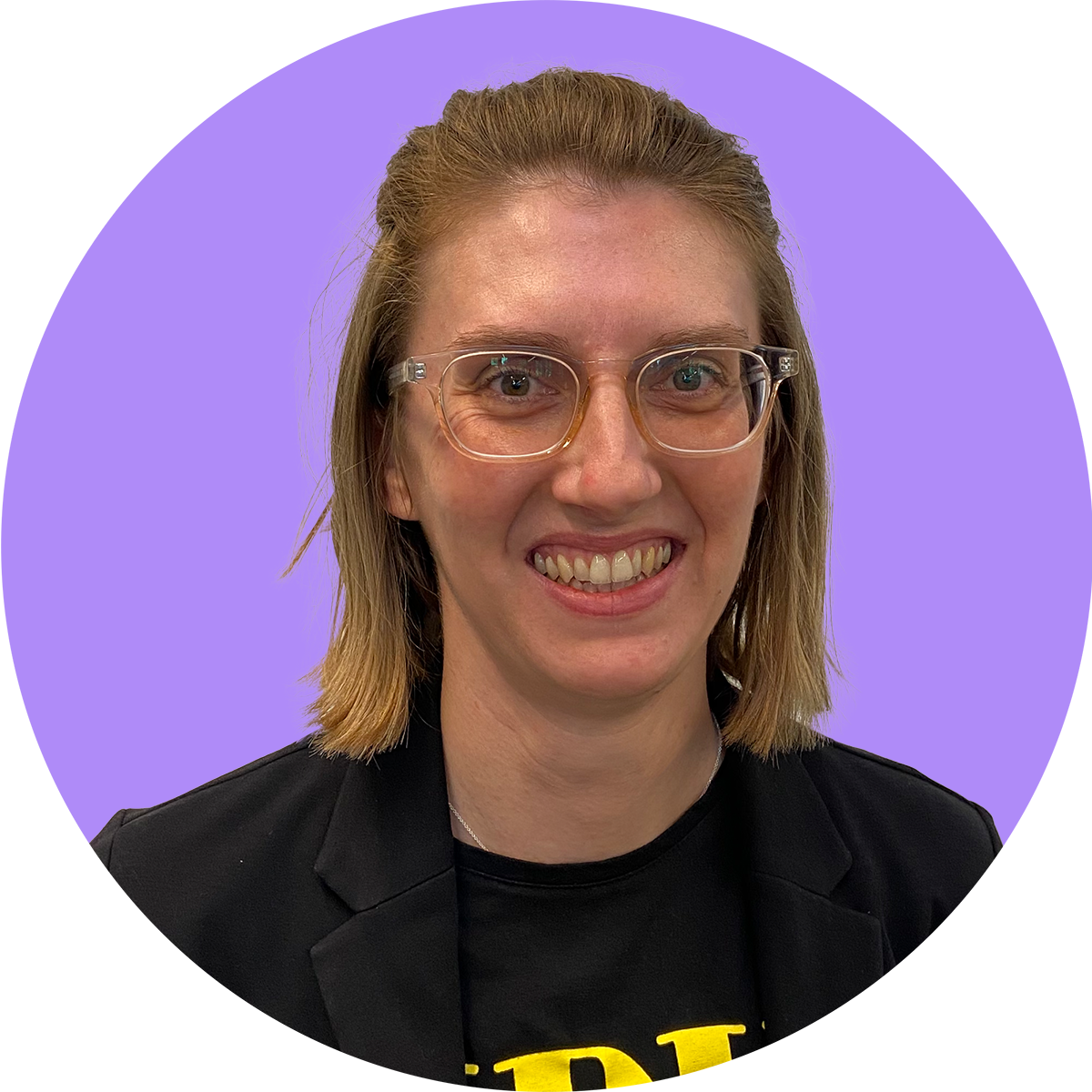Luli Adeyemo says what a lot of people are thinking.
“It’s a question that we shouldn’t have to ask: why is diversity, equity, and inclusion important is like saying, why is it important to have a space that represents society that everyone can feel like they belong?”
As the Director of TechDiversity, Luli draws on her 30-year career in the sector to inspire tech-based organisations to implement long-lasting change around diversity.
As part of our special Future Led event, held in partnership with Brisbane Art Design (BAD) and the Museum of Brisbane, Luli chatted to Liquid’s Fiona Armstrong, about diversity, equity, and inclusion, and why it makes us better designers.
“Inclusive design is just good design,” Fiona told us. “That’s what we’re talking about today. It’s real stuff that makes a real difference."
The conversation touched on some of the issues you would expect (unconscious bias and avoiding box-ticking, for example) and also covered designing better solutions, honest leadership, measuring impact, and supporting a diverse workforce.
Through sporting analogies (Luli is a BMX world champion) and stories of growing up in “a small medieval town in the middle of England”, Luli encouraged everyone to share their own stories and be part of the conversation but cautioned that there was “no quick fix for DEI”.
“This doesn’t happen overnight. There needs to be a commitment for change over a short, medium and long period of time, and recognising there’s things you can do along the way to start getting benefits within your organisation,” she said.

(L-R) TechDiversity's Luli Adeyemo and Liquid's Fiona Armstrong
'Design for the edges'
Design without diversity is intrinsically flawed, perpetuating solutions and experiences that don’t reach their full potential because significant segments of the population have been excluded.
“There’s so much of what we take for granted in society today that actually came about through inclusive design,” Fiona said.
“There’s a real pressure sometimes to design for the majority but actually designing for those edge cases, those people in the minority, you’re designing something that’s truly inclusive – it works for everybody.
"Design for the edges and you’ll find a better solution for everybody.”
Over the course of Fiona’s 20-year career, she has spent time working with communities including older Australians, refugees, and victims of crime, and in areas such as mental health and bereavement.
She told the audience that designing inclusive solutions required more than hearing a range of lived experiences – it needed to understand how people were thinking, feeling and how they made decisions.
“Part of the challenge of what we do is really trying to understand what’s motivating somebody, how they’re feeling about something and what are the little nudges that will make them feel more confident or supported, and more capable of achieving what they want to achieve,” Fiona said.
“It’s that understanding of true diversity, and we build that into a design that works.”
Luli, wearing a moon boot due to a recent BMX accident, acknowledged that hobbling around inner Sydney had even given her a new way of seeing the world.
"If you don’t have a lived experience of something, then sometimes you think you’re doing the right thing but actually, perhaps you’re doing the wrong thing. I think having people with all these varying experiences as part of the design solution is really important,” she said.
“We’re trying to change the language of the conversation to exactly that: representation. How can we be the best if only part of society is represented and contributing to the business, to the organisation, to design?”

Making diversity more inclusive
Studies have repeatedly found that diverse teams are more innovative and productive than homogeneous groups – yet businesses and sectors still struggle.
“Until we get to a point where we can measure diversity, equity and inclusion in business metrics, it’s not going to become a priority. We’ve had lots of examples of this over time,” Luli said.
“When I first came to Australia, people were talking about sustainability, and within a business you had people who were championing this. It wasn’t until the business metrics came through with regards to the cost savings that could be achieved by adopting some of these technologies or principles – that it became a business priority.
“We’re not there yet with diversity, equity, and inclusion.”
Programs or initiatives are often established with the best of intentions, Luli added, but then fall short or run the risk of being a box-ticking exercise. It’s important to recognise that people are at different starting points, so might not be able to take advantage of an opportunity in the same way as others.
"Businesses will do something which is equal for all, but not really understanding the diversity within their organisation to make sure that it’s equitable,” Luli said.
“How can you create an initiative that’s equitable? It’s great that everyone is able to participate but … the equity bit is understanding the diversity in the workforce and coming up with initiatives that suit individuals."
More from our Future Led series:
- The vision for a connected student experience in higher education
- How robotics and AI can boost local manufacturing
- How co-design can support ageing with dignity
Luli added: "It’s not easy; it’s not a one size fits all. But if you really want to be equitable, you need to know your people and understand the variances of initiatives that are needed to make sure they suit everybody.
"I think a lot of the time organisations and businesses are more diverse than they realise. But because they’re looking at diversity only from what they can see, they’re missing out on the diversity that exists in their workforce.
"If they took the time to understand what they already have, it would be a positive conversation.
"Once we have the base foundation of understanding who we are, then we can be intentional about programs and initiatives that we run to close the gap, and most importantly, to be able to measure the impact of that change, and what is the economic impact of that change. Then you can start to get the metrics."

Diversity isn’t one person’s job
Everyone can and should be part of this conversation, Luli told us. A diversity manager can’t be expected to shoulder the responsibility for a business.
“There’s been a 71 per cent increase locally over the past five years of diversity manager hires, which is great on one hand because it shows the commitment that businesses are doing something, that they want to make a change,” Luli said.
“But the flipside of that is, the responsibility is put on one person’s shoulders.
“This person has the challenge of educating the business and constantly having to battle with the business to make a change. What we’re now seeing is those diversity managers are leaving after 18 months to two years out of frustration.”
The commitment must become part of the DNA of a business, from leadership through to individuals.
Part of TechDiversity’s work is helping executive leadership teams to understand the business value of diversity, equity, and inclusion, and why it’s important to have it represented daily.
Luli’s advice to individuals was to be open and honest, and be mindful of assumptions – about yourself and others.
“There’s a responsibility that you have, that everybody has as individuals, to share their stories. Silencing yourself because of what you think others may think of you is a real anchor to hold you back,” she said.
“Sharing stories is a really powerful way to advocate for a position. I think that sometimes people make assumptions around you as an individual, around maybe what your needs are, maybe what your ambitions are based on how you present.
“In the past I have walked into boardrooms and made an assumption that I didn’t belong. I was silencing myself because I didn’t feel like my voice wanted to be heard.
"I made a judgement about the people in that room that wasn’t right, that wasn’t fair. It wasn’t until I started talking and sharing my story and opening up about my story, that they opened up about theirs, and we realised our commonalities.
“People need to feel safe within that workforce to show up as their whole self, their true self, so that the business can understand who they are.”
:: Learn more about how TechDiversity helps business executives to leverage the true value of DE+I
